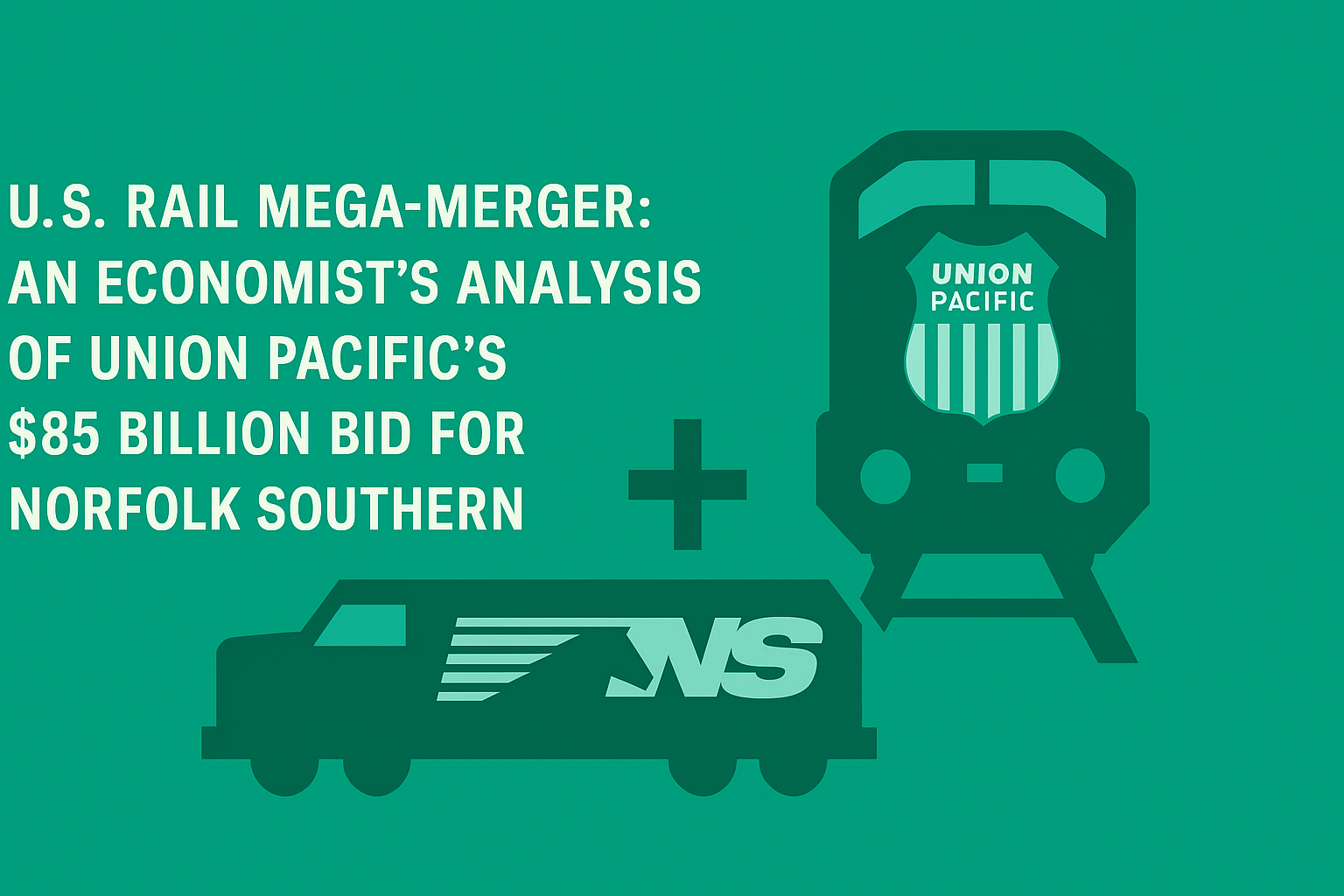Union Pacific’s $85 billion proposal to acquire Norfolk Southern could create the first true coast-to-coast rail network in U.S. history. This analysis explores the economic rationale, regulatory hurdles, and potential impacts on competition and supply chains.
1. Overview of the Deal
On July 29, 2025, Union Pacific (UP) announced an $85 billion bid to acquire Norfolk Southern (NS), aiming to form the first coast-to-coast freight railroad in the United States. The plan forecasts $2.75 billion in annual synergies, mainly from eliminating interchange bottlenecks and integrating operations across the continent.
The Surface Transportation Board (STB) acknowledged receipt of the merger notice the following day, triggering the formal review process. However, shippers’ groups, labor unions, and some lawmakers have voiced concerns over potential reductions in competition, higher freight rates, and service quality issues.
2. Strategic Significance
This proposed merger stands out for several reasons:
- Network Complementarity – UP’s western core network (Pacific ports, Mexico connections) complements NS’s eastern footprint (major consumer hubs, chemicals, automotive). Eliminating key interchanges like Chicago could shorten transit times and reduce yard dwell.
- Post-CPKC Competitive Pressure – Following the creation of CPKC’s Canada–U.S.–Mexico network, UP faces a structural disadvantage in eastbound access, increasing the urgency for an eastern partner.
- Governance Flexibility – NS’s 2024 board changes, driven by activist investor Ancora, increased management’s openness to large-scale strategic moves.
3. Economic Rationale and Challenges
From an investor’s perspective, $2.75 billion in projected synergies is attractive for a capital-intensive industry like rail. However, past Class I mergers have often suffered from initial service disruptions, prompting shippers to build buffer inventories.
Breakingviews analysis suggests that markets are pricing in only about a 36% probability of approval, reflecting regulatory risk. Moreover, without a voting trust, the integration process will need careful capital allocation to avoid credit rating strain, especially given the required investments in signaling, automation, and yard reconfiguration.
4. Regulatory Focal Points
The STB will evaluate the deal through the lens of “public interest”, focusing on:
- Competition – Loss of alternative routes and potential local monopolies in major hubs (Chicago, Memphis, New Orleans).
- Service Guarantees – Mandatory disclosure of KPIs such as on-time performance, car dwell, and train velocity, with penalties for deterioration.
- Open Gateways – Ensuring access rights for other Class I carriers (CSX, BNSF, CPKC).
- Labor & Safety – Commitments to protect jobs and invest in safety infrastructure.
5. Scenario Analysis
- Conditional Approval (50–60%) – Approval contingent on open gateway provisions, service KPIs with penalties, and independent monitoring. Synergy capture at 50–70%, with potential one-day reduction in coast-to-coast transit times.
- Extended Review or Refiling (30–40%) – Additional scrutiny leads to higher integration costs and slower execution, giving rivals time to strengthen networks.
- Rejection or Withdrawal (10–20%) – Parties pivot to long-term haulage rights and slot reservations as an alternative to full integration.
6. Supply Chain Implications
In the short term, timetable changes and yard upgrades could cause delays. Shippers should secure dual-rail contracts and maintain higher safety stock.
In the medium term, direct west-coast-to-east-coast service could enable inventory reductions and improve reliability—provided regulatory safeguards maintain competitive pressure.
7. Economist’s Conclusion
This deal could reshape U.S. freight rail economics, unlocking operational efficiencies and network fluidity. Yet without strict conditions, it risks reducing competition and raising rates.
Policy Recommendation: The STB should mandate:
- Quantitative targets for open gateway access.
- Service KPIs with enforceable penalties.
- Independent monitoring and real-time public data access.
These measures would balance the benefits of network integration with the need to preserve competition.


